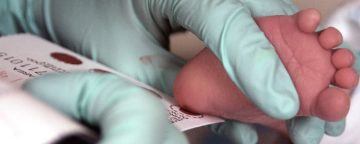Shawna Williams in The Scientist:
 Treating infants with X-linked severe combined immunodeficiency with low-dose chemotherapy followed by gene therapy gave the children the ability to make the cells needed to mount a normal immune response, researchers report today (April 17) in the New England Journal of Medicine. The finding marks a milestone in the long effort to use gene therapy for the devastating condition, also known as bubble boy disease, which requires untreated patients to be isolated in order to protect them from life-threatening infections. Experts caution that longer follow-up is needed to determine whether the gene therapy–treated patients are truly cured.
Treating infants with X-linked severe combined immunodeficiency with low-dose chemotherapy followed by gene therapy gave the children the ability to make the cells needed to mount a normal immune response, researchers report today (April 17) in the New England Journal of Medicine. The finding marks a milestone in the long effort to use gene therapy for the devastating condition, also known as bubble boy disease, which requires untreated patients to be isolated in order to protect them from life-threatening infections. Experts caution that longer follow-up is needed to determine whether the gene therapy–treated patients are truly cured.
“We were able to remove the protective isolation within three to four months post gene therapy and send the babies home to their families,” said Ewelina Mamcarz, a pediatric hematologist-oncologist at St. Jude’s Children’s Research Hospital in Tennessee, in a telephone press conference about the study. “They are all toddlers now, exploring life, attending daycares, and this part has been extremely rewarding.”
People with severe combined immunodeficiency (SCID) have mutations in genes needed for immune cell function, leaving them vulnerable to infection. In the most common form of the disease, X-linked SCID (SCID-X1), the gene at fault is IL2RG, which codes for a piece of the cytokine receptors needed for the normal development of several different kinds of immune cells, including T cells, B cells, and natural killer cells.
More here.
